17 little-known facts about Disney history die-hard fans should know
Tarah Chieffi

- Almost everything you see at Disney has a story behind it, including nods to closed attractions and notable cast members.
- Some of Disney's concepts never came to fruition, like a California ski resort and a West Coast version of Epcot.
- Disney hides many of its secrets in plain sight, like the "punny" names of the Big Thunder Mountain Railroad trains.
Disneyland in Anaheim, California, was the first Disney park to open back in 1955. Since then, Disney has opened five additional parks and a variety of other themed travel experiences, and, along with them, a rich history that many visitors may never even notice without a little digging.
See, you don't need to know Disney's secrets or history to enjoy a vacation there, but one could certainly argue that a trip to Disney becomes even more enjoyable when you do learn these fascinating bits of Disney's past.
To get you started on earning your (unofficial) Disney historian badge, here are 17 little-known Disney facts that you might want to know.
Read the original article on InsiderAlthough Disneyland's haunted mansion now boasts 999 happy haunts, when it opened in 1969 there was one more: the Hatbox Ghost.
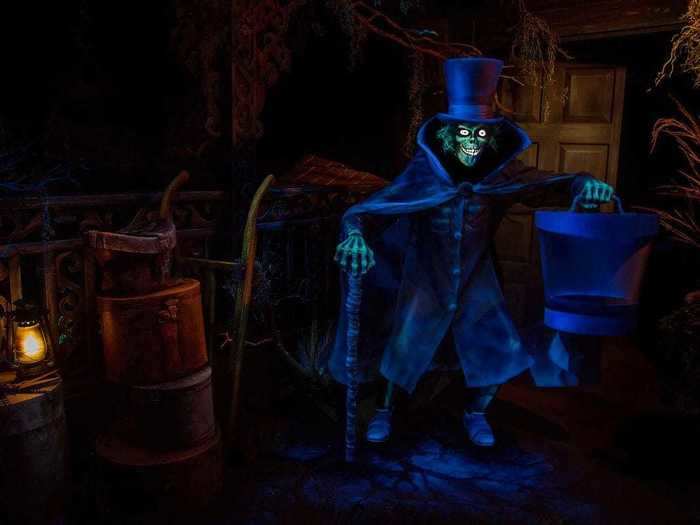
While he did carry a hatbox, his true allure came from the ghastly effect that caused his head to disappear from his neck and reappear in the hatbox. Sadly, the effect never quite played out the way it was meant to and the ghost was removed less than a month after the ride opened.
The ghost's absence turned him into a bit of a legend, with most people believing he was simply too scary or that he never existed in the first place. Through photos, videos, and Imagineer accounts, the Hatbox Ghost's existence has been verified and in 2015 he was returned to his rightful home as part of Disneyland's 60th Anniversary Diamond Celebration. And, with today's more advanced technology, his scary effect goes off without a hitch.
Walt Disney had plans to build a ski resort.
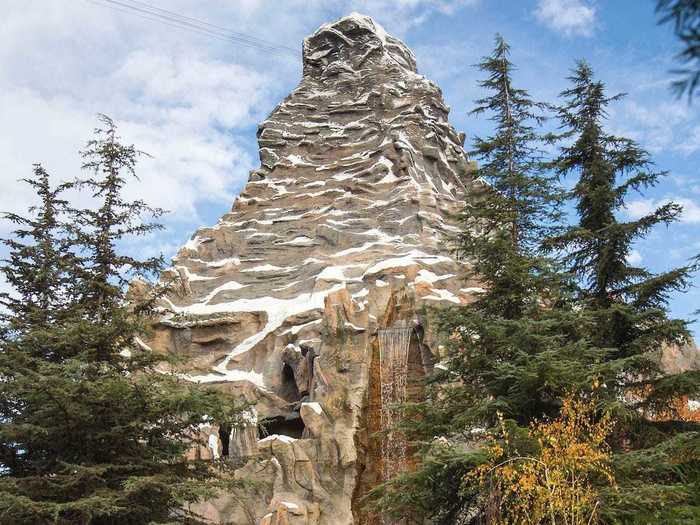
In the 1960s, after the opening of Disneyland in California, Walt Disney set his sights on building a ski resort in Mineral King Valley. According to the OC Register, Disney did purchase the necessary land and was in the planning stages of building the resort, but the project was held up by locals and environmentalists who opposed the project. After Walt's death in 1966, the project was dropped.
It's not all bad news, though, because management shifted their focus to an even bigger project in Florida called Disney World. And those Country Bears who so happily perform at Disney World were planned to take up residence at the ski resort, making it technically one of the last attractions Walt Disney personally worked on.
Disney World was once home to an improv nightclub.

It's hard to describe Disney World's Adventurers Club in Florida because there is really nothing on Earth to compare it to.
Shuttered in 2009 along with the rest of Pleasure Island to make way for Disney Springs, Joe Rohde describes the Adventurers Club as part nightclub and part improv theater that never took itself too seriously. The idea for the club came to life when Rick Rothschild, Pleasure Island producer, attended one of Joe Rohde's many themed parties. After noticing the "eclectic nature" of Rohde's home — surely a result of his many world travels — Rothschild, along with Rohde and a team of Imagineers brought the Adventurers Club to life in 1989.
The club was themed after a 1930s club for world explorers, but it was much more than a place to grab a drink at the end of a long day at Disney. Throughout the evening, a (somewhat rowdy by Disney standards) cast of characters, including both humans and animatronic masks, would perform in different areas of the club.
This Walt Disney World News Today video from the club's 2019 reunion may give you a better idea of what this one-of-a-kind club was like.
There's an explorer's society with Easter eggs placed throughout the parks.
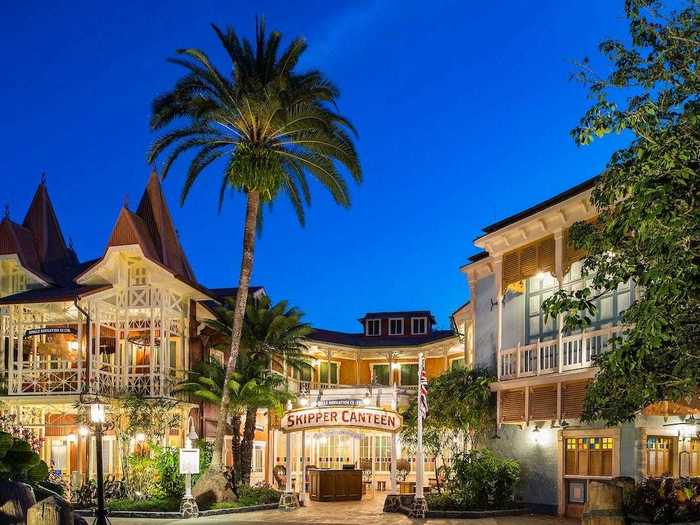
The first known appearance of the Society of Explorers and Adventurers, or S.E.A., was at Tokyo DisneySea. When guests enter the Fortress Explorations attraction, Attractions Magazine reports that they are given a map of the fortress and the different areas they can explore, with a short introduction to S.E.A. on the back.
Unfortunately, S.E.A's members are not real people so you won't be joining their wordly ranks anytime soon. You can, however, see the society's influence throughout many of the Disney parks, and also Aulani and Disney Cruise Line. The easiest-to-spot instance of S.E.A. at Disney World is the Jungle Skipper Canteen restaurant in Adventureland. The restaurant's proprietor is one Dr. Albert T. Falls, a S.E.A. member, and you can even dine in the S.E.A. room – a secret meeting place for the famed society.
The Matterhorn didn't always have a scary snow monster.

When the Matterhorn Bobsleds opened at Disneyland in California in 1959, the mountain that housed the coaster was mostly hollow. That changed in 1978 when the attraction was moved from Tomorrowland to Fantasyland and the hollow areas were filled in with themed show scenes. As the ride underwent future changes, additional show scenes were added and an updated, more intimidating Abominable Snowman replaced the originals.
The Matterhorn is also known for being the first tubular steel coaster in the world.
Dole Whip wasn't the first popular pineapple treat at Disney.
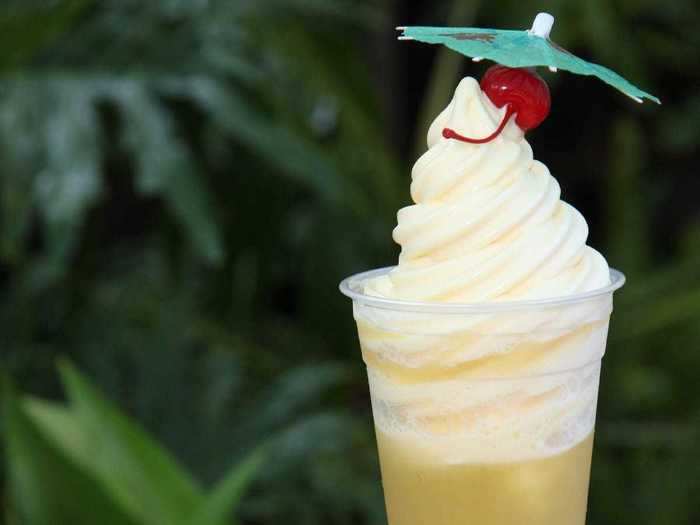
Although you can probably purchase a Dole Whip at your local zoo or make it yourself at home, the tropical soft-serve treat has become synonymous with Disney.
Long before you could sip on a Dole Whip Float or a rum-splashed Dole Whip cocktail, LAist reports that Disneyland sold pineapple spears and pineapple juice in conjunction with their partnership with Dole Food Company. Dole became a sponsor of the Disneyland Tiki Bar in 1974, but the cult-classic Dole Whip wasn't introduced until 1986.
Many of the dinosaur fossils used at Animal Kingdom are real.
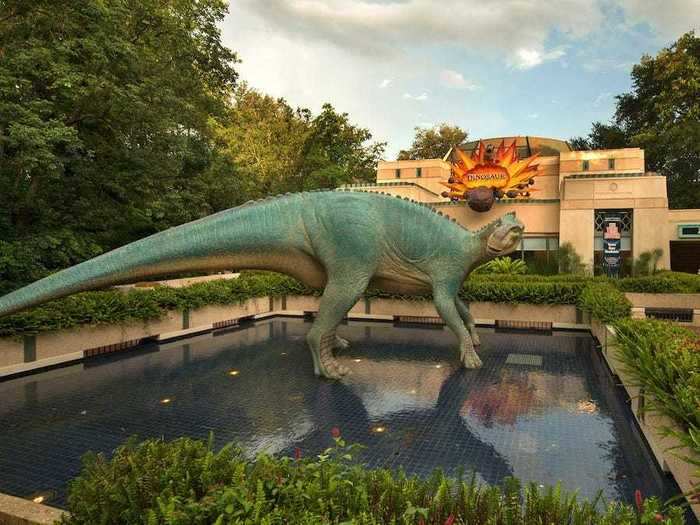
Joe Rohde, the Imagineer who headed up the team that brought us Disney World's Animal Kingdom, often reveals inside information on the park and its inspiration, including the fact that anything "that looks like a fossil of a prehistoric creature...is either a real fossil of a prehistoric creature or a replica of the real fossil."
He specifically mentions that the fossils inside the queue for Dinosaur are very much real. Even the fossils that aren't real are usually casts of real fossils, including Dino-Sue, a 13-foot tall, 40-foot long T-Rex, and the largest, most complete T-Rex fossil ever found.
Disneyland almost had its own Epcot.
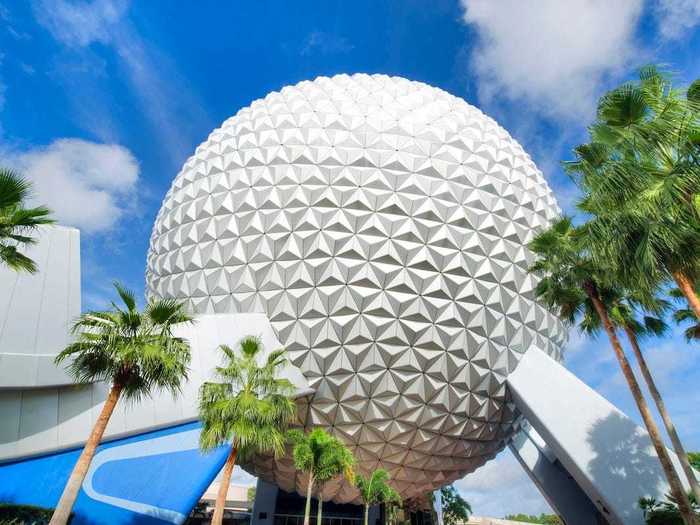
Disney California Adventure is currently home to Pixar Pier, Cars Land, and a number of areas that celebrate the Golden State of California.
The park originally opened on February 8, 2001, but 10 years prior, Disney was planning for its second California theme park to be a West Coast version of Disney World's Epcot, as reported by the LA Times.
Westcot, as it was to be called, would have been modeled after Epcot, including its own golden version of Spaceship Earth called Spacestation Earth. Along with Westcot, the expansion included plans for Disneyland Center, a collection of retail, dining, and entertainment facilities similar to today's Downtown Disney District, three new hotels, and a network of monorails and people-mover systems to transport guests throughout the new areas.
Legendary cast members are honored throughout the parks, but you have to know where to look.

Next time you are walking down Main Street U.S.A. in one of the Disney parks, make sure to look up. Disney legends are often recognized with their very own window, usually depicting a fictitious business inspired by their real-life hobbies and passions. Often, Disney finds other ways to immortalize these individuals that aren't as obvious to passersby, but are possibly even more meaningful for their sheer creativity.
One such example can be found in the Matterhorn Bobsleds at Disneyland. Before his passing in 1994, Frank Wells, former Walt Disney Company president, chief operating officer, and accomplished mountain climber, attempted to climb Mount Everest. Bad weather held him back from reaching the summit, but according to Disneyland VIP Tour guide Philander Butler, guests can now find a box with the name "Wells Expedition" among the Abominable Snowman's collection inside the Matterhorn – a sentimental tribute to a man who gave so much of his life to the parks.
You can often find nods to defunct rides in the attraction that took their place.
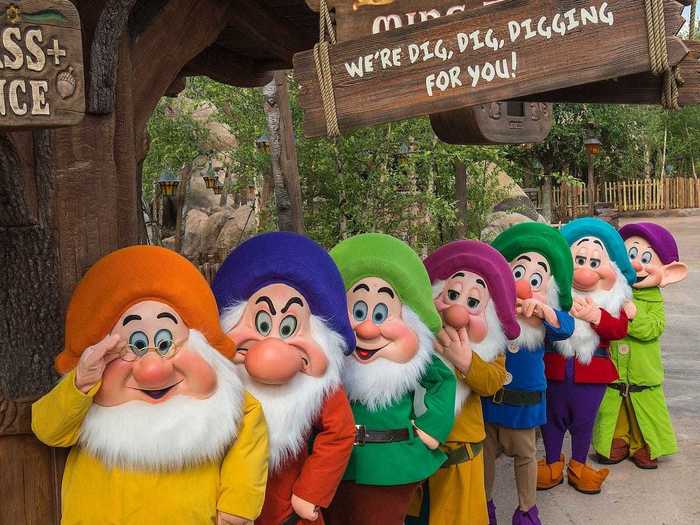
From time to time, and whether you like it or not, Disney parks sometimes replace favorite attractions to make way for new ones. When this happens, however, Disney's Imagineers often throw in references to the closed attraction when building the new one.
An example of this can be seen in Disney World's The Many Adventures of Winnie the Pooh, which took the place of Mr. Toad's Wild Ride in 1999. According to Orlando ParkStop, if you look closely at the portraits in Owl's house, you'll see a portrait of Owl and Mr. Toad and one of Pooh and Mr. Toad's friend, Moley.
A few of the talking trophy heads from Disneyland's Country Bear Jamboree can now be found inside their version of The Many Adventures of Winnie the Pooh, and if you look closely while riding Seven Dwarfs Mine Train, you'll notice that some of the animatronic characters from Snow White's Scary Adventure reprised their roles on the new coaster.
The Enchanted Tiki Room was the first Disney attraction to use animatronics.
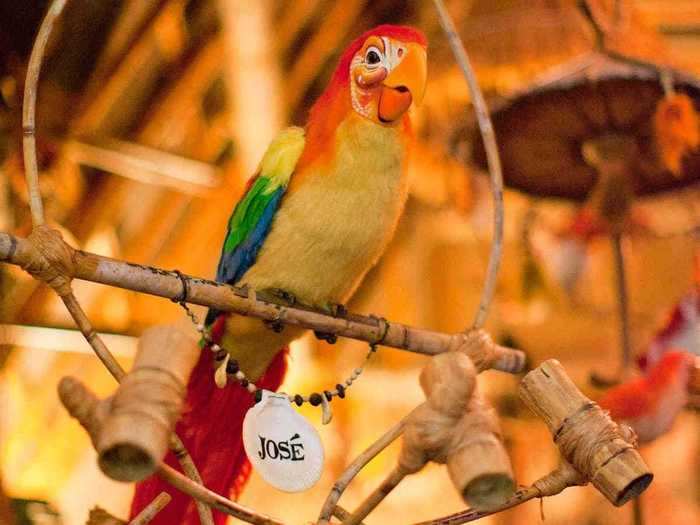
Before there were dancing bears or talking pirates, Walt Disney gave us the singing birds of the Enchanted Tiki Room.
When this lively musical attraction opened on June 23, 1963, it marked the first use of audio-animatronics at Disneyland. The technology used to animate these birds was the same technology used the very next year when Great Moments with Mr. Lincoln debuted at the New York World's Fair, and Disney hasn't stopped pushing the limit on what an audio-animatronic can do since.
The "it's a small world" ride debuted outside of Disneyland.
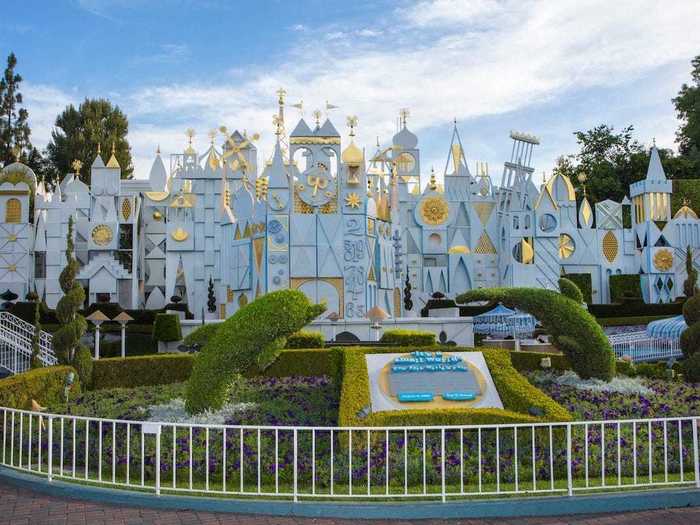
Though it opened in the early days of Disneyland in 1966, "it's a small world" was originally built as a pavilion for the 1964-65 New York World's Fair.
The theme of that year's fair was "Peace Through Understanding," and if you've ever gotten the ride's catchy tune stuck in your head, you'll know that it's a perfect representation of this sentiment.
The earworm hasn't changed, but new animatronics that represent favorite Disney and Pixar characters were added throughout the ride in 2009.
Animal Kingdom opened on Earth Day.
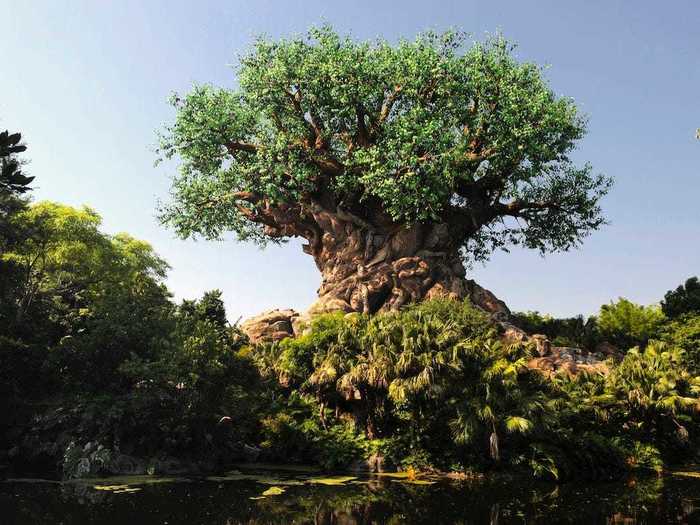
On April 22, 1998, Disney World celebrated Earth Day in a big way by adding a fourth Florida theme park to the Florida resort.
Animal Kingdom was inspired, in part, by Walt Disney's own love for animals, which can be seen in some of his early sketches (long before Mickey came on the scene) and the animals that often showed up in his films.
Animal Kingdom offers more than just safari rides and characters in explorer costumes; there are also opportunities to learn more about animals and the environment, and the role we play in their future.
One of the original Disneyland train cars was named for Walt Disney's wife.
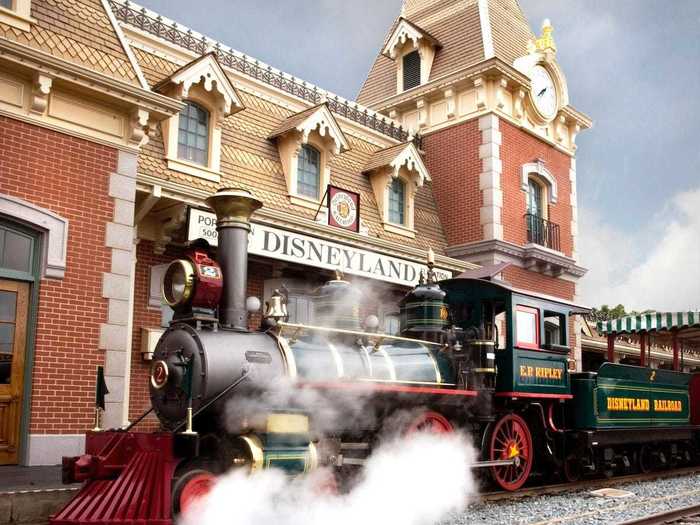
Walt and Lillian Disney first met when she worked in the company's Ink and Paint Department. Walt would sometimes drive her home from work in his car, and later named one of Disneyland Railroad's original train cars after her. After they were married, Walt built a miniature steam power train in his own backyard and named it "Lilly Belle" after his beloved.
When the Disneyland Railroad opened in 1955, Lilly's namesake train car could regularly be seen on the tracks. While no longer being used in Disneyland's day-to-day operations, they do sometimes bring the car out for special occasions.
Disney's first trackless ride was at Epcot.
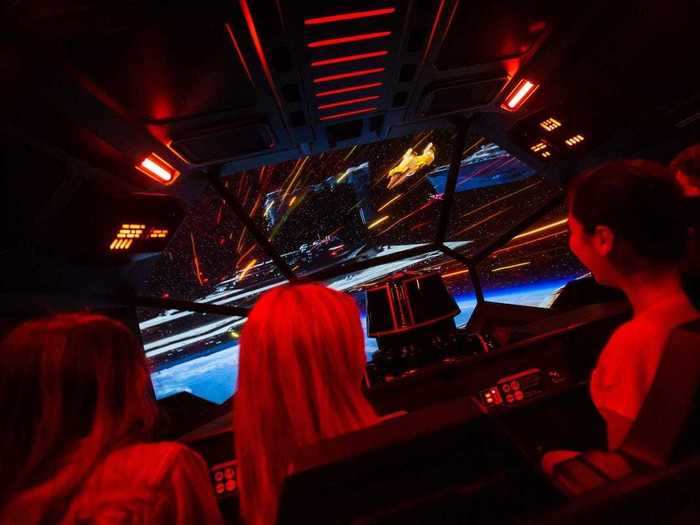
Trackless rides like Star Wars: Rise of the Resistance and Luigi's Rollickin' Roadsters abound at today's Disney parks, but the very first of this ride type opened along with the rest of Epcot in 1982.
Universe of Energy, later known as Ellen's Energy Adventure and now the site of the future Guardians of the Galaxy: Cosmic Rewind coaster, utilized computer-controlled ride vehicles that were known as "traveling theaters." From there, this technology was used for The Great Movie Ride in 1989 and Twilight Zone Tower of Terror in 1994.
The first true trackless ride – one that could actually travel in a randomized path instead of a straight line – was Pooh's Hunny Hunt at Tokyo Disneyland.
Disneyland created a whole new alphabet for the Indiana Jones ride.
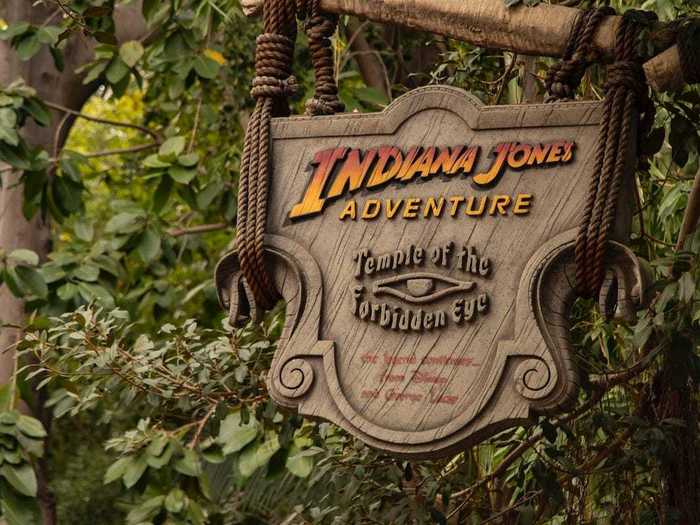
As if designing an entirely new attraction wasn't enough, Disneyland Imagineers developed a whole new alphabet just for Adventureland's Indiana Jones Adventure attraction.
Named for the powerful (and vengeful) deity Mara, these Maraglyphics can be found throughout the ride's queue. When the ride first opened, guests would receive decoder cards to help decipher the hidden messages. These cards are no longer being given out, but with the Play Disney Parks app, WDWNT confirms that you can still try your hand at cracking the code.
The Thunder Mountain train car names are pretty funny.
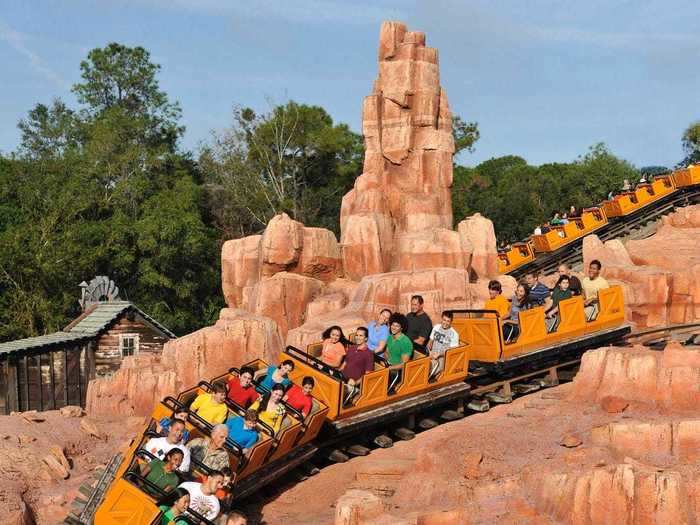
Modeled after the red rocks and sweeping vistas of the American West, Big Thunder Mountain Railroad is known as the "wildest ride in the wilderness."
At both Disney World and Disneyland, the Imagineers christened the railroad's train cars with some witty names – U.B. Bold, U.R. Courageous, I.M. Loco, I.B. Hearty, and U.R. Daring – that seem to foretell that one must be either very brave or very foolish to enter an abandoned (and presumably haunted) mine shaft.
READ MORE ARTICLES ON
Popular Right Now
Popular Keywords
Advertisement